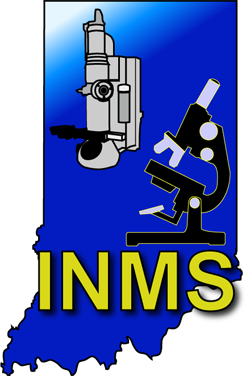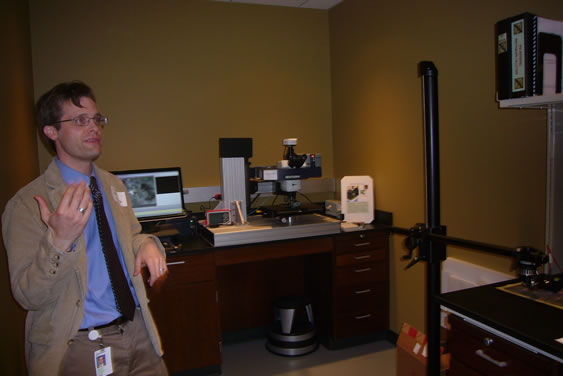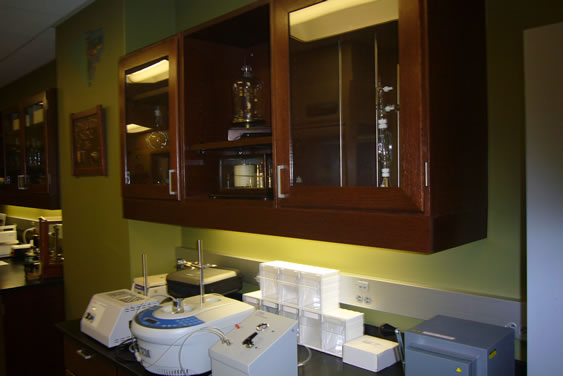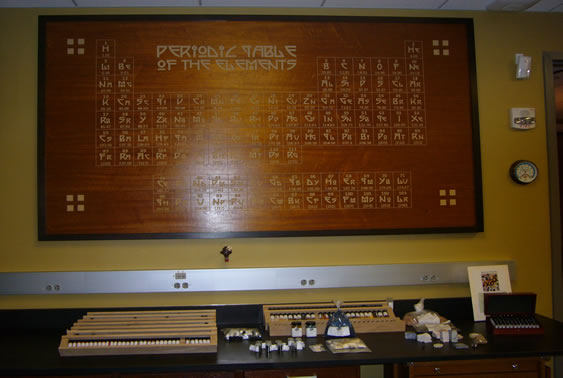
Indiana Microscopy Society
An Affiliate of the Microscopy
Society of America

|

|

|

|
 |

|
 |

|

|

|
Indiana Microscopy SocietyAn Affiliate of the Microscopy
|
|
 The fall INMS meeting was held from 5:00 to 8:00 pm on Thursday, November 17, at the Indianapolis Museum of Art (IMA). The meeting (sponsored by both the IMA and Carl Zeiss Microscopy, LLC) was hosted by Dr. Gregory Smith of the IMA. Greg is the Otto N. Frenzel III Senior Conservation Scientist at the IMA's newly established Art Conservation Science Laboratory and kindly offered both to host our meeting and also to present a talk.
The fall INMS meeting was held from 5:00 to 8:00 pm on Thursday, November 17, at the Indianapolis Museum of Art (IMA). The meeting (sponsored by both the IMA and Carl Zeiss Microscopy, LLC) was hosted by Dr. Gregory Smith of the IMA. Greg is the Otto N. Frenzel III Senior Conservation Scientist at the IMA's newly established Art Conservation Science Laboratory and kindly offered both to host our meeting and also to present a talk.
We had about 40 attendees and representatives or information from 8 of our coporate sponsors. The evening meal was provided by the IMA's Nourish Café and was probably the best meal we have ever had at a meeting of the INMS!
After dinner, we held a brief INMS business meeting during which we gave away two IMA memberships as door prizes. The winners were John Murray of Bloomington and Don Chernoff of Indianapolis.
The evening's main event was a talk by Dr. Smith entitled "Fast Structural and Compositional Analysis of Cross-section Samples from an 18th Century Oil Painting." The presentation covered some of the many microscopies and micro-spectroscopies that are used in the analysis and conservation of artwork. A more detailed abstract for the talk and Dr. Smith's biosketch can be found here. Guided tours of the exquisitely decorated and equipped Art Conservation Science Lab were held at the conclusion of Dr. Smith's talk.
Here are some images and commentary from the tour of the new lab at the end of the evening:
| Dr. Greg Smith started the IMA's new Art Conservation Science Laboratory in 2010. It has been designed using Mission-style doors and cabinets and although it is full of state-of-the-art analytical equipment of all sorts and has been in use for more than a year, it still has that "new construction" smell. The lab has windows that open onto the wooded grounds of the IMA, but where it was not possible to have windows, the lab has art on its walls. This lovely plaque identifies the lab and adds to the "look and feel" of the facility. |  |
 |
Greg and colleagues provided a tour of the new laboratory at the end of our evening at the IMA. In addition to various types of microscopes and micro-spectrometers, the lab houses state-of-the-art equipment for liquid chromatography, thermal calorimetry and other analytical techniques. Here is Greg standing beside a Raman spectrophotometer capable of analyzing small areas of both two-dimensional art such as painting and textiles and three-dimensional art such as sculpture and ceramics. |
| A group of attendees chats towards the end of the tour of the new lab. |  |
 |
This look along another wall of the lab shows both a good view of some of the Mission-style cabinets and some pieces of analytical equipment the lab uses to analyze various pieces of art. The plaque shown in the first image is on the wall just to the left of this set of cabinets. The mixture of art with the Mission-style design combines to give the lab a very warm and welcoming feel. |
| Greg designed this cut-wood periodic table that decorates one end wall of the lab. The items on the counter below are the type collection of compounds used as dyes and paints that Greg and his staff are assembling for use as standard reference materials when analzing artwork. |  |
 |
This scanning electron microscope (SEM) equipped with an energy dispersive X-ray spectrometer (EDX detector) was used in the analysis of The Madonna Appearing to St. Philip Neri by Italian artist Sabastiano Conca. This painting was the subject of the talk that Greg gave earlier in the evening, and the EDX data provided new insights into the creation and conservation history of this painting from the IMA collection. |